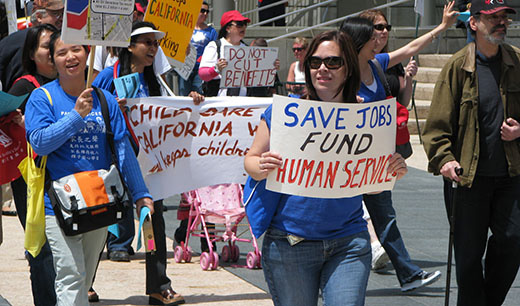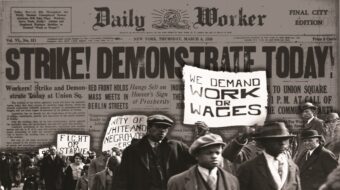
WASHINGTON (PAI) – The U.S. unemployment rate in July was 7.4 percent, the Bureau of Labor Statistics reported, down 0.1 percent from the month before. A separate survey reported businesses claimed to create a net of 162,000 new jobs last month.
That left the U.S. with 11.5 million people officially unemployed, 263,000 fewer than in June. But the official jobless rate understates the problem.
One of every seven workers (14 percent) were unemployed, people toiling part-time when they really want full-time jobs or so discouraged that they stopped seeking work, BLS said. And 37 percent of the unemployed in July were jobless for more than six months.
The figures show the economy continues its slow recovery from the Great Recession, otherwise known as the Bush Crash, when the financial finagling of Wall Street and similar speculators pushed the U.S. and the world economies over the edge.
“The labor market begins the second half of 2013 with a fizzle,” said Heidi Shierholz of the Economic Policy Institute. “At this rate, it would take six years to fill our 8.3-million jobs gap and get back to health in the labor market.”
The fizzle not only affects those seeking work, but lowers wages for job holders, keeps underemployment high, too, and job growth is “disproportionate in low wage industries,” she said.
Despite the slight drop in numbers, unemployment among Latinos climbed to 9.4 percent in July, up from 9.1 percent in May and June, and 9.0 percent in April. Among African Americans, the numbers dropped from 13.7 percent in June to 12.6 percent. Black and Latino unemployment is higher, due to structural racism that limits, among other things, educational levels and employment opportunities, analysts say.
Factories added 6,000 jobs in July, to 11.975 million. The largest changes were in cars and parts (+9,100) and food plants (-5,500). Fabricated metal plants added 1,500 jobs, offsetting a 1,400-job loss in primary metals. Some 1.08 million factory workers (6.9 percent) were still jobless in July.
Construction lost 6,000 jobs, to 5.79 million, though July is supposed to be the height of construction season. The biggest change was in residential specialty contractors (-9,800). There were 767,000 officially jobless construction workers (9.1 percent), but construction union leaders say that understates unemployment, since a worker toiling only one day in BLS’ survey week is counted as employed for the entire month.
Services claimed to add 157,000 jobs in July. As usual, they were in low-paying sectors such as retail trade (+46,800) and bars and restaurants (+38,400). Higher-paying services, such as utilities (-1,600) and mass transit (-8,600) lost jobs.
The National Opinion Research Center, analyzing federal data, reported in March that “during the Great Recession, about one-half of the U.S. jobs lost were middle-class positions, but only about 2 percent of jobs gained in the recovery pay middle-class wages.”
Governments gained 1,000 jobs, net, to 21.852 million in July. Job gains in local schools (+10,100), seasonally adjusted, offset losses in all other government areas.
Photo: Marilyn Bechtel/PW

MOST POPULAR TODAY


Zionist organizations leading campaign to stop ceasefire resolutions in D.C. area

High Court essentially bans demonstrations, freedom of assembly in Deep South

Afghanistan’s socialist years: The promising future killed off by U.S. imperialism

Communist Karol Cariola elected president of Chile’s legislature






Comments